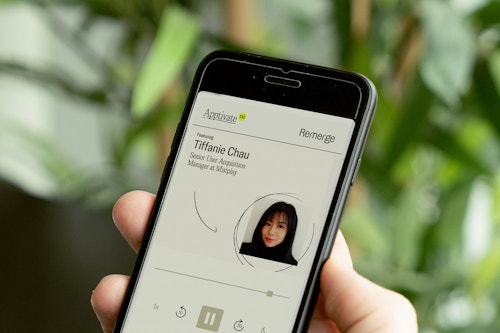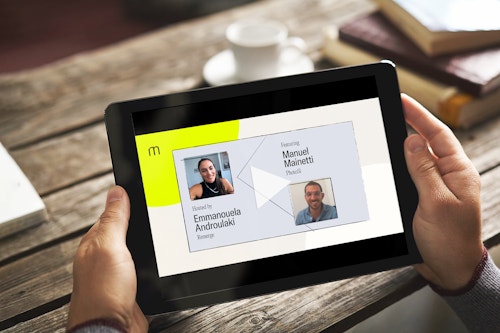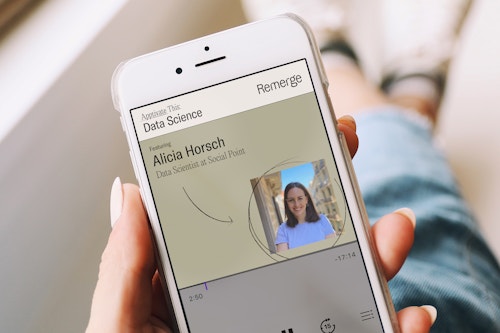App Marketing and Incrementality Insights with Mario Dietrich
May 05, 2020

We met up with Mario Dietrich, Head of Growth at LOVOO, to enjoy a meal together and to learn from his six years of marketing apps. On top of his expertise in growing and retaining a user base, Mario shares a few insights from his experience using incrementality measurement. In this spotlight interview, you’ll learn a bit about trends and testing, along with a few fun things about dating apps!
First of all, thanks for joining us!
Could you give us a quick intro about LOVOO - the app with a heart?
LOVOO started in 2011 and is the largest German-speaking dating app by downloads. We change how people meet through innovative location-based algorithms and an app radar feature that helps people find successful matches. Since 2017, LOVOO has been part of the US-based The Meet Group and has integrated live streaming as a new and entertaining way of connecting people.
What seasonalities have you seen through the years of marketing a dating app? Is Valentine's Day a thing for dating apps at all?
There are a few offerings for users for Valentine’s day. Normally our users are those who don’t have a Valentine, at least not yet, so our approach would be to “Get ready to find your Valentine”. This is what we’re doing as we usually push our users around seasonal topics.
The other seasons are quite general, like at the end of the year or the new year’s start “new year, new me”, winter is the season of sitting on the sofa after all.
We also see seasonal impacts during summer holidays, or if there is a football world cup and France goes to the finals or even wins the title as we’ve seen 2 years ago. At that point, we saw a dip in our users. It was so interesting - the further France went into the finals, the stronger the impact.
From icebreakers to subscriptions, there are a few monetization channels. How do you decide when something works out or not?
We do lots of A/B testing to figure it out. We have an internal tool to assign any user to any feature - several features are always visible only to a certain percent of our users.
However, the approach sometimes is a bit tricky because we’re a social media platform where millions of people interact with each other. For some features, A/B-testing is not as straightforward because they might indirectly impact users who are not assigned to the treatment group.
Anything you'd like to introduce to the dating app scene?
Many dating business models are based on old gender norms where the girls go to the bar and don’t pay for drinks. We see the same norms in many dating apps where female users are used to not paying for anything, or not paying much. That’s an old approach but it’s still valid.
This is fortunately changing in society and will be reflected within dating apps, but we can’t just charge female users without adding certain value for them. We’re trying to work around that business model but it’s difficult. At LOVOO, our product teams are really creative with their ideas for the app and are testing new features a lot.
We just recently released a new value-adding and gender-neutral feature, “Cherry Picks”. This feature applies the same rules to all genders. By answering a few questions like “do you prefer the movies or watching Netflix?”, users are matched with those who have similar responses. Both sides can initiate a conversation and can unlock more features with the premium version of the app.
Let's get into the juicy part - app retargeting and measurement!
LOVOO is quite ahead of the game when it comes to mobile measurement. What was your experience moving towards incrementality?
For the first time, incrementality gives us measurable impact for our remarketing efforts. We are pretty happy with the results and learnings from it, since we can finally prove that our retargeting ad spend is worth it.
Before incrementality measurement, we’ve tried a couple of campaigns with retargeting based on attributed KPIs, but it was always missing trustworthy proof. This is something that is super important to have because otherwise you will not be able to justify any euro spend, and that’s really the right way to go. Maybe with the new Bayesian approach (Remerge’s), we can even see better insights and more stability in the results.
« For the first time, incrementality gives us measurable impact for our remarketing efforts. »
Mario Dietrich, LOVOO
What are your criteria for choosing the right incrementality measurement methodologies?
There’s not so much difference in measuring incrementality. You would have people to treat or not and then you compare them against each other. There are differences in group assignment, so I try to understand the way people are randomizing (users) in order to interpret the results correctly. We did tests with placebo ads on a re-engagement case, but this is not suitable for an always-on measurement as it comes with additional costs. I’m a huge fan of keeping a consistent holdout group.
Transparency is also super important. We need to be able to verify the partner’s data with our internal data to benchmark the groups against each other. If a potential partner cannot offer that, that’s already a minus I would say.
« Transparency is also super important. »
Mario Dietrich, LOVOO
What are some app marketing trends to watch out for?
A general market trend that is going on and continues to go on is those networks - CPI networks are consolidating and dying because of the poor quality that they mostly provide. At the same time, those players are becoming DSPs and many of them have had classic install CPIs in the past.
Incrementality is a huge trend. People have been talking about that for a couple of years and it was a big topic on MAU last year. Since attribution is open to fraud and not all the data points are actually available, with all these black boxes for acquisition, it’s very difficult to really make attribution correct, let’s say.
For me attribution is always a model - a model to figure out which campaign spend makes sense and which doesn’t - but it will never be correct. Incrementality, if done correctly, should give you the most accurate picture. It should tell you the difference in what you do.
Any last words of advice for other app marketers who are looking to improve their app growth strategy?
When it comes to retargeting:
- Test different segments with multiple DSPs.
- make use of internal BI and use raw data export to compare treatment vs. control.
- always keep a holdback group to measure campaign success.
- if possible, go incrementality-only.
Thank you Mario, it was such a pleasure getting to know you!





